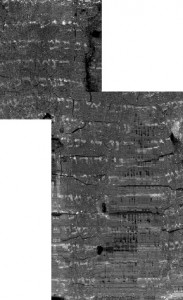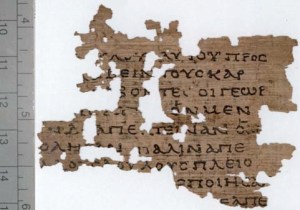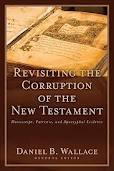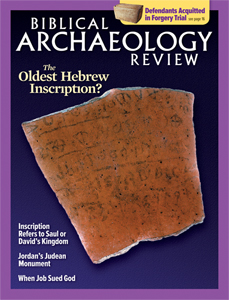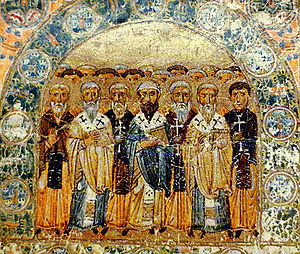Back on 9/14 I posted “Re-measuring Goliath: 9’9” or 6’9”?” In the comments section I brought up an issue I want to make the focus of a new post: the quality of the Masoretic Text of the OT. It seems that it may not represent the original wording in significant places, particularly in books like Jeremiah and 1 and 2 Samuel. Here are the relevant portions from J. Daniel Hays’ article:
As in the book of Jeremiah, there is quite a difference between the Septuagint text of 1-2 Samuel and the Masoretic Text of 1-2 Samuel. Also similar to the textual situation in Jeremiah is the fact that in 1-2 Samuel the Hebrew text from the Dead Sea Scrolls (4QSama) generally aligns with the Septuagint over against the MT. In addition, the story in 1 Samuel 16-18 represents the place where the differences between the two are the most severe. In the Septuagint text of Codex Vaticanus, our oldest complete Greek Bible, 1 Samuel 16-18 is 44% shorter than in the MT. Not only are entire verses missing but entire paragraphs are missing. In the David and Goliath narrative these include 17:12-31, twenty verses that explain about David and his brothers and how he came to be at the battle, and 17:55-58, the four puzzling verses in which Saul doesn’t seem to know who David is in spite of the fact that David had been playing music for Saul back in 1 Samuel 16. As in Jeremiah, the differences between the Septuagint and the MT go well beyond anything that could be attributed to scribal errors or transmission mistakes. And 4QSama generally (but not always) agrees with the Septuagint against the MT. Either somebody added a large chunk of text to the original autograph, somebody deleted a large chunk of text, or else two different accounts of 1-2 Samuel developed separately.
…
Practically all scholars agree that the evidence from 4QSama implies that at the time of Christ there were two different Hebrew text traditions of 1-2 Samuel. As mentioned above, the vorlage or text tradition behind the MT in 1-2 Samuel contains many more readily identifiable scribal errors that the tradition reflected in 4QSama/LXX. Furthermore, and of great interest to those of us who try to connect the doctrine of inspiration into our theories of composition, it should be underscored that when using 1-2 Samuel as a source, the author (compiler, editor, etc.) of 1-2 Chronicles (as reflected in the MT) used a Hebrew text from the textual tradition reflected in 4QSama/LXX and not the one that is reflected in the MT of 1-2 Samuel.14 That is, frequently the MT in 1-2 Chronicles disagrees with the MT in 1-2 Samuel, but agrees with the reading in 4QSama and/or the Septuagint. So the inspired author/editor of 1-2 Chronicles either did not have a copy of the MT tradition text of 1-2 Samuel or elected to use the text tradition reflected in 4QSama/LXX, presumably because he regarded it as a superior text.
Our theory of inerrancy has to account for stuff like this. What do we do with ~23 extra verses in the MT version of I Samuel 17-18? If the LXX and DSS preserve the original, inspired form of the book (as seems likely), are we prepared to cross those verses out of our Bibles in the same way we should change Goliath’s height from 9’9” to 6’9”? This is a matter of textual criticism, and is not altogether unlike what we see even in NT text criticism in which the authenticity of long passages is disputed (the longer ending of Mark, the periscope of the woman caught in adultery). The difference here is the quantity of verses that are suspect. Either way, we should be open to the evidence and not shut our eyes to the facts because they make us uncomfortable.
The main reason I bring this up is not to cause anyone to doubt the reliability of Scripture. Indeed, I could write a series of posts arguing for the trustworthiness of Scripture. The reason I bring this up is because it provides an answer for why we find so many contradictions between Samuel and Chronicles when it comes to numbers. For example:
1. In 2 Sam 8:4 David takes 700 horsemen, whereas in 1 Chron 18:4 he takes 7000.
2. In 2 Sam 10:18 David slew the men who drove 700 Syrian chariots, and 40K horsemen, whereas in 1 Chron 19:18 David slew 7000 charioteers and 40K footmen.
3. In 2 Sam 23:8 we are told that David’s chief captain slew 800 men at one time with his spear, whereas in 1 Chron 11:11 he is said to have slain 300.
4. In 2 Sam 24:9 Joab counted 1,300,000 fighting men, whereas in 1 Chron 21:5 he is said to have counted 1,570,000.
Why the discrepancy? It could be due to copyist errors, or a misunderstanding of certain numerical values due to the evolution of the Hebrew numerical system. Given the fact that not all numbers disagree between the two books, this option is unlikely. The best answer is that the Chronicler was using a different Hebrew text of Samuel that had different numerical values in certain places, which means there were at least two competing manuscript traditions of Samuel. Of course, the question remains as to which is the original text, and how the changes were introduced (copyist error, purposeful tampering with the text, misunderstanding of older numerical system, etc.). That is where textual critics enter the stage, and I step off. For what it’s worth, I tend to think the Chronicler was using a superior Hebrew text, and should be given the benefit of the doubt over the MT of Samuel. The MT is a younger text. The DSS and LXX give us a much earlier picture of the text.
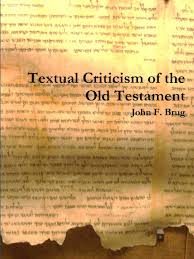 While there is much discussion regarding the fidelity of the transmission of the NT text, very little attention is given to the OT. I’ve long been looking for a good book dedicated to OT textual criticism, written from the perspective of a conservative text critic, so I was happy to come across John F. Brug’s Textual Criticism of the Old Testament.
While there is much discussion regarding the fidelity of the transmission of the NT text, very little attention is given to the OT. I’ve long been looking for a good book dedicated to OT textual criticism, written from the perspective of a conservative text critic, so I was happy to come across John F. Brug’s Textual Criticism of the Old Testament. 
